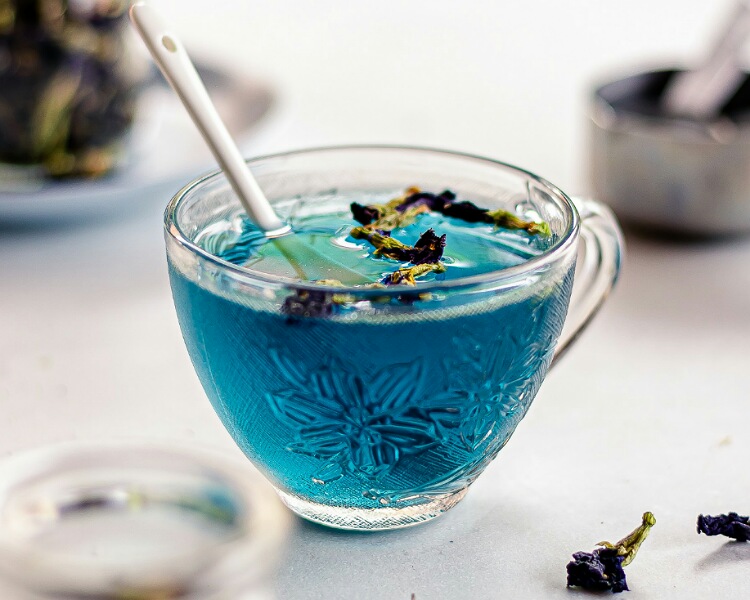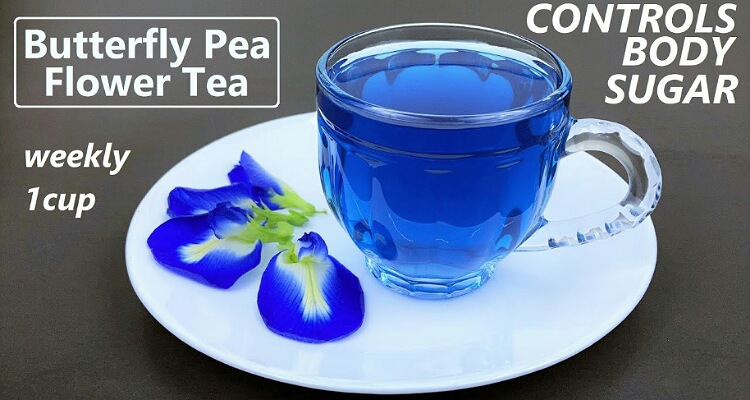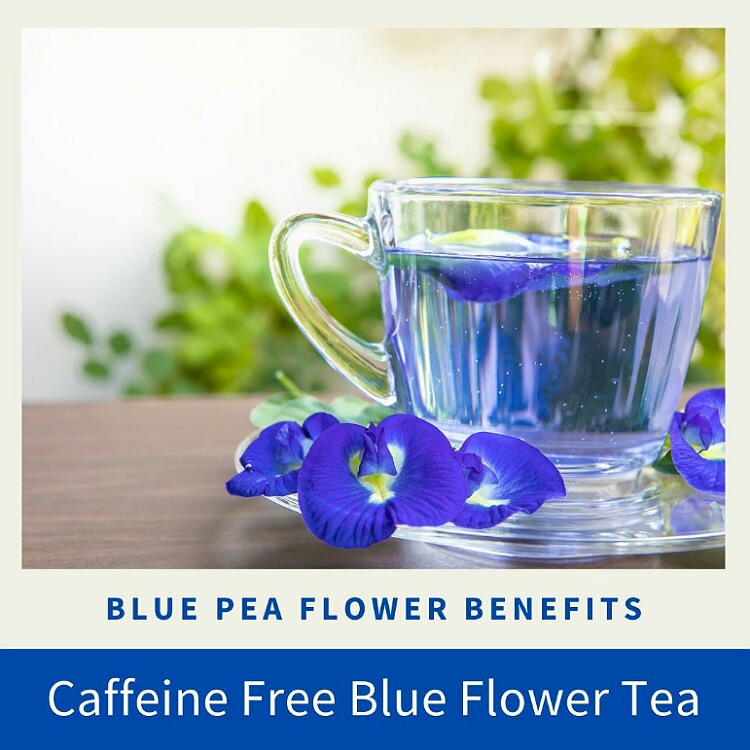Blue tea or butterfly pea or blue pea tea is an herbal infusion. The term tea is a misnomer because blue tea is not derived from the tea plant or Camellia sinensis.
Which plant leaves are used in its making? Are there any health benefits of consuming this tea? What are the side effects?
Blue tea: herbal infusion
Blue tea is a herbal infusion and not a tea. The product to make it comes from the dried petals of the flower of the plant Clitoria ternatea L. The flowers are blue and hence they impart color to the infusion as well.
These petal extracts are a natural blue food colorant. The plant has another name which is butterfly pea plant.

The flowers have a characteristic color due to the presence of anthocyanins in them.
This is a phytochemical that is also found in other blue or purple-colored fruits and vegetables such as eggplants, pomegranates, etc. This chemical serves as an antioxidant and is beneficial for health.
When brewed, the tea is usually blue. But it can also become red, green, or violet depending on the pH of the water used in the making of the infusion.
The color can be altered with the addition of lemon or lime juice or tonic water. This infusion also has mint, cinnamon, lemongrass, or ginger added to it for flavor and to enhance its medicinal properties.
Health benefits
Normally, our body is exposed to a lot of oxidative stress and this generates damaging free radicals that are the root cause of several chronic diseases, heart problems, and also cancer.
The antioxidants from plants can mop up these free radicals and prevent them from causing damage and diseases. The blue pea flower has a lot of anthocyanins, especially delphinidin.
These can scavenge free radicals and protect the body against various diseases such as diabetes, heart diseases, arterial diseases, and cancer.

Due to delphinidin, lipid peroxidation comes down. This process of lipid peroxidation damages the cell membranes and causes aging and leads to the formation of a carcinogen called malondialdehyde (MDA).
Glutathione peroxidase (Gpx) in the body reduces the amount of lipid peroxidation in the body. A study in 16 obese men revealed that consuming the extract of butterfly pea flowers after a fatty meal increased the level of Glutathione peroxidase and hence lessened lipid peroxidation.
Animal studies have shown that blue pea extracts can lessen blood pressure through their vasodilation effect. They lower blood cholesterol and have antithrombotic action. Thus, the extracts can protect the heart and enhance its activity.
Research has also revealed that extracts of the blue pea flower can reduce the action of carb-digesting enzymes.
Therefore, there is a lessening of digestion and this prevents blood sugar rise. However, studies on this anti-diabetic action of the extracts have shown conflicting results.
Other benefits
The extract has antifungal and antimicrobial actions. Animal studies have also revealed that it can help boost memory and prevent mental decline. Human studies in this direction are lacking.

Since it has no caffeine, it can be a safe alternative to caffeinated drinks for people who get problems with consuming the latter. It can serve as a natural colorant in the food industry.
Blue tea is relatively safe to consume. There are some isolated reports in which excessive consumption led to nausea, vomiting, stomach upset, and lose of motion.
One can brew it in boiling water. Enhance the tea with sugar or honey and lemon juice.